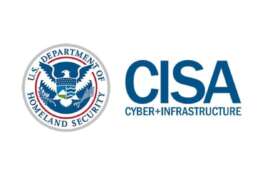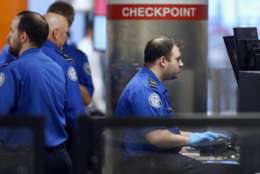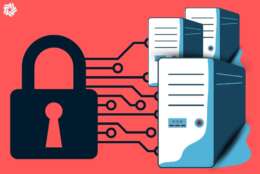Cybersecurity
-
Randy Resnick is the director of Zero Trust Architecture Program Management Office in the DoD’s CIO’s office. A team of 17 to 18 people will analyze the zero trust plans submitted by 43 services and agencies.
October 24, 2023 -
CISA has taken on more responsibilities for the defense of federal agency networks. A new report considers how much farther that should go.
October 23, 2023 -
Traditional security controls are insufficient in protecting against major security breaches. They tend to be reactive, static, noncontextualized around threats and are often based on compliance requirements and information technology practices. As a result, traditional security controls are not responsive enough to anticipate, evolve and adapt to threat actors’ behaviors and activities.
October 19, 2023 -
Agencies are supposed to protect their data systems from cybersecurity threats, especially those known as high value asset systems. The Homeland Security Department office of inspector general looked at a high value asset system operated by the Transportation Security Administration.
October 19, 2023 -
The planned addition of facial recognition to Login.gov comes as GSA attempts to boost the program’s “identity proofing” capabilities.
October 18, 2023 -
Two tough new rules from the Federal Acquisition Regulation Council are coming, but originating with the Cybersecurity and Infrastructure Security Agency. They have to do with contractor incident reporting and for how contractors button up unclassified systems.
October 18, 2023 -
An urgent report from the Government Accountability Office is aimed at the State Department. GAO called for State to, in its words, "expeditiously get on with a cybersecurity risk management program." State has a plan, now it has to carry it out. For more on this, Federal Drive Host Tom Temin spoke with Jennifer Franks, GAO's Director of Information Technology and Cybersecurity.
October 18, 2023 -
Air Force Lt. Col. Andrew Wonpat, a member of the Air National Guard's Cyber Operations Group, said assessing non-traditional traits of employees is proving successful in expanding the pool of qualified cyber workers.
October 17, 2023 -
Insider cybersecurity threats are just as potent as Russian and Chinese hackers. Some employees make mistakes, clicking on that bad phishing link. Unhappy or disgruntled employees, that's another matter. Federal Drive Host Tom Temin talk with someone who says such people are far more susceptible than average to social-engineering attacks. Tom's guest was Max Shier, Chief Information Security Officer at Optiv.
October 17, 2023 -
NIST is updating its seminal Special Publication 800-53, which forms the basis of federal cyber requirements, to address an urgent gap in identity and authentication measures.
October 17, 2023 -
In the pantheon of cybersecurity risks our federal government currently has on its plate, a quantum cyberattack may not be the immediate “front burner” issue. But it’s still a red-hot risk. Cryptographic algorithms secure everything from our industrial control systems to our national defenses to the entire U.S. financial system.
October 16, 2023 -
Federal agencies and contractors alike face increasing cybersecurity, fraud, sanctions and supply chain risks stimulated by geopolitical events. Experts at Guidehouse say an important strategy to mitigate risk is to simply have knowledge of the dynamics of geopolitical issues and effects they throw off.
October 16, 2023 -
GSA plans to centralize its application security program amid a broader push to ensure the government only relies on secure software.
October 13, 2023 -
Building trust is essential for businesses working with the federal government. The key is to start by making the effort and investments necessary to secure your cyber supply chain. Acting in good faith and providing transparency will demonstrate trustworthiness and create more business opportunities.
October 13, 2023 -
In the realm of federal cybersecurity, change is both inevitable and necessary. The urgency of President Biden's 2021 Executive Order to implement a zero trust architecture by September 2024 has set the stage for a pivotal transformation. Yet, as the deadline draws near, it's apparent that while the directive's intent is clear, the path to its realization is fraught with complexity and challenges.
October 12, 2023














